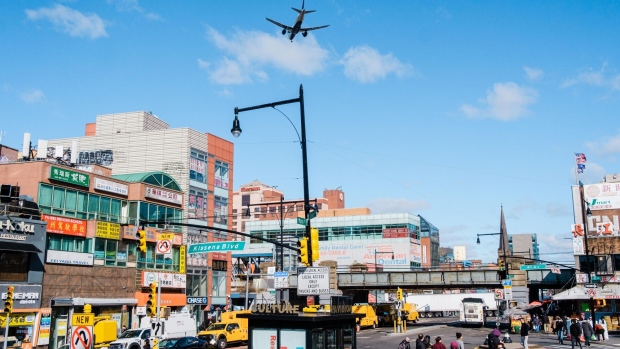Oct 10, 2023
US Small-Business Optimism Drops on Outlook for Economy, Credit
, Bloomberg News

(Bloomberg) -- US small-business optimism dropped to a four-month low in September, reflecting worsening expectations for the economy and credit conditions.
A National Federation of Independent Business index of sentiment fell by half a point to 90.8 last month, the group said Tuesday. A net 43% of small-business owners saw business conditions deteriorating in the next six months, the most since May.
Small firms were also increasingly pessimistic about credit availability. The share of survey respondents saying it was harder to get a loan compared to three months ago increased to 8% on net — the most since March, when Silicon Valley Bank collapsed.
The Federal Reserve has hiked interest rates to the highest level since the early 2000s to tame persistent inflation. Officials have reiterated the need to keep borrowing costs higher for longer, triggering a recent selloff in the bond market.
Here’s what else small businesses had to say about credit conditions:
- One in 10 firms on net expect worse credit conditions in the next three months, matching the highest share since 2012.
- About a quarter of borrowers on net said they now pay a higher interest rate compared to three months ago, matching the highest share since 2006.
- Small-business owners said they paid an average interest rate of 9.8% on short-term loans, the highest in data back to 2013.
Respondents to the NFIB survey continued to rank inflation and labor quality among their single-most important problems. The share of small businesses who raised selling prices rose for a second month in September, marking the first back-to-back increase since early 2022.
“Owners remain pessimistic about future business conditions, which has contributed to the low optimism they have regarding the economy,” said NFIB Chief Economist Bill Dunkelberg. “The bottom line is being squeezed, leaving owners few options beyond raising selling prices for financial relief.”
Hiring struggles were evident as well. Firms reporting job openings that were hard to fill rose by the most since the start of the year, to 43%. Those who said they had few or no qualified applicants for vacancies rose to 57%, the most in a year.
(Adds graphic, tout to survey)
©2023 Bloomberg L.P.






